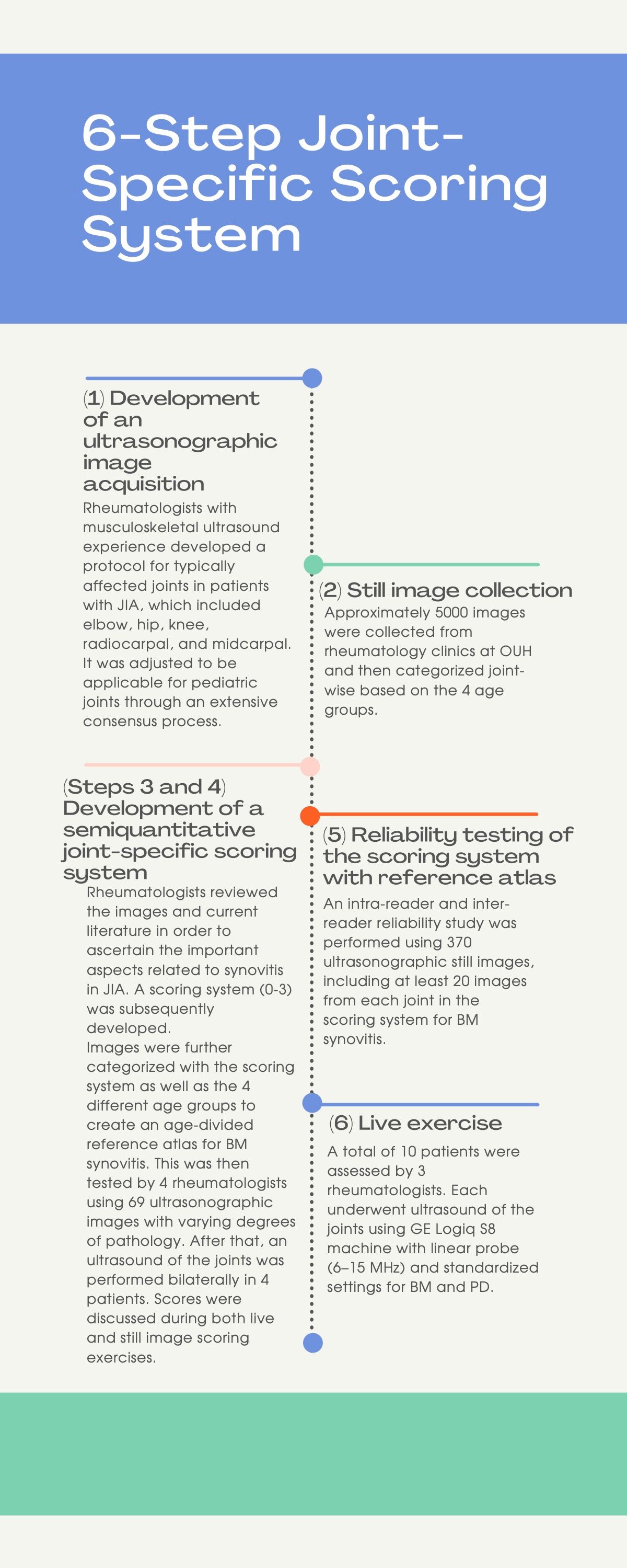Joint-Specific Scoring System Demonstrates Scoring Reliability in Patients With Juvenile Idiopathic Arthritis
Results from a joint-specific scoring system with reference atlas and ultrasonographic image acquisition in patients with juvenile idiopathic arthritis demonstrated moderate to excellent reliability for scoring of synovitis.
A joint-specific scoring system with reference atlas and ultrasonographic image acquisition protocol was developed for patients with juvenile idiopathic arthritis (JIA), according to a study published in BMJ Journals.1 Results demonstrated moderate to excellent reliability for scoring of synovitis, which may be a valuable tool for both clinicians and future research endeavors.
Unfortunately, while ultrasound is an important tool for evaluating joint inflammation, it is historically difficult to interpret in children.
“The challenge of achieving inactive disease in JIA relates closely to the challenge of monitoring disease activity to detect persistent joint inflammation and step up therapy when required,” explained investigators. “Symptoms and clinical signs of joint inflammation can be difficult to assess and interpret in children due to vague complaints and clinically challenging anatomical regions. This emphasizes the need for sensitive measures of joint inflammation to assess disease activity and treatment response.”
A team of 7 rheumatologists created a scanning protocol and semiquantitative joint-specific scoring system for B-mode (BM) synovitis for the elbow, wrist, metacarpophalangeal 2–3, proximal interphalangeal 2–3, hip, knee, ankle and metatarsophalangeal 2–3 joints. Power Doppler (PD) activity was developed, and the reference atlas was divided into 4 age groups (2–4, 5–8, 9–12, 13–18 years). The reliability of the joint assessments were based on still images and a live exercises, which were performed on 10 patients with JIA.
The study was conducted from January 2018 through October 2020 at Oslo University Hospital (OUH) at the Department of Rheumatology. Investigators created a 6-step system:

Of the 10 patients (7 girls and 3 boys), the mean age was 7.5 years and median disease duration was 10 months (0-65 months). A total of 7 patients had oligoarthritis (70%) and 3 patients had rheumatoid factor-negative polyarthritis (30%). There were 2 patients in group 1 (2-4 years), 5 in group 2 (5-8 years), and 3 in group 3 (9-12 years). Half were currently treated with methotrexate, 1 with etanercept, 1 with nonsteroidal anti-inflammatory drugs (NSAIDs), and 3 were not receiving any systemic treatment. For BM synovitis, the most commonly affected joints were the knee, anterior elbow, and anterior subtalar. For PD activity, the radiocarpal and the knee were the most affected.
Investigators found that still image scoring on a joint level demonstrated good to excellent intra-reader reliability (intraclass correlation coefficient [ICC]/kappa ranges: 0.75–0.95/0.63–0.91) as well as moderate to excellent inter-reader reliability (ICC/kappa ranges: 0.89–0.99/0.50–0.91). Live scoring marked inter-reader reliability as moderate to excellent for both BM synovitis (0.94/0.51) and PD activity (0.91/0.60). The still image scoring showed excellent reliability for both intra-reader (ICC/kappa: 0.96/0.91) and inter-reader (ICC/kappa: 0.97/0.80) in the PD activity category. Inter-reader reliability for still images, included the scoring exercises combined, was good to excellent (avmICC (95% CI) 0.97 (0.94 to 0.98).
While the study was strengthened by the varied ultrasonographic images in varying age ranges and degrees of pathology, there were some notable limitations. These included the limited number of patients in the live scoring exercise, and the fact that only 3 sonographers participated and only scanned patients once. Further, there was no comparison cohort of healthy participants. However, the goal of the study was focused on patients with JIA and to test reliability of the system. Lastly, investigators did not have images of all grades in the atlas and scoring of PD activity was not divided by patient age. Nevertheless, the main focus was to illustrate different grades of PD signals, with no regard for age variability.
“The study demonstrated moderate to excellent reliability when used in assessments on still images as well as on patients,” concluded investigators. “We expect that the system can be a valuable tool for clinicians and future research. Future studies are needed for further validation of the scoring system with atlas, such as association to clinical measures of disease activity and the system’s sensitivity to change.”
Reference:
Sande NK, Bøyesen P, Aga AB, et al. Development and reliability of a novel ultrasonographic joint-specific scoring system for synovitis with reference atlas for patients with juvenile idiopathic arthritis. RMD Open. 2021;7(2):e001581. doi:10.1136/rmdopen-2021-001581